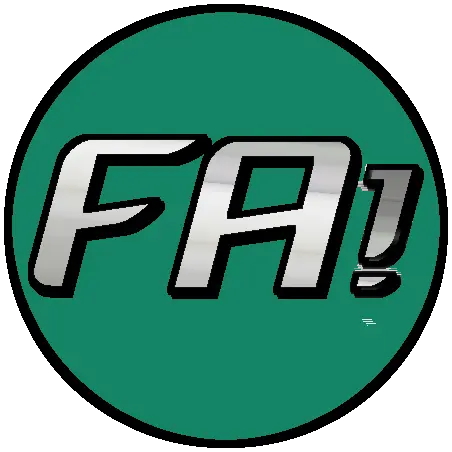Earlier today, I saw this thread on Mastodon: https://writing.exchange/@jannik@norden.social/112965146817661555
In it, the poster wondered what solarpunk cars would look like, and speculated that we already agree that they’d be lightweight small cars with electric drive. I wrote up a few posts in response, and gathered up some reference images, and I think they might be useful for folks looking to add detail to streets in Fully Automated.
I’d argue that in a solarpunk world, most personal travel should be feasible with public transit in one form or another, and with bikes or other similar pedal/electric contraptions filling much of the last-mile needs. And FA! offers a wide range of vehicles from ropeways and airbus to trains and streetcars and ferries that fill those various public transit niches. Likewise, most cargo should be being moved by train, airship, or ocean vessel.
But that still leaves a lot of gaps: last mile transit, especially for heavy cargo, and personal conveyance for people with disabilities and other needs spring to mind. FA! has some wild/exciting stuff like personal rotorcoptors and gliders here, but what would some of the more mundane vehicles look like?
I think with most transportation handled by public transit, car-ready streets are likely going to be de-prioritized, if only as a matter of cost/resource allotment. I picture a lot of them shrunk down to make room for parks, gardens, and sponge-city permeable surfaces and basins, leaving something wider than a bike path, but narrower than our current default.
I think we’d see road networks used mostly to reach local destinations, and public transit hubs, and that the vehicles on those roads would generally travel much slower, and could be held to much lower safety standards than modern cars.
In real life there are a dizying array of contraptions people come up with in alternative vehicle competitions - hybrid electric, solar, and pedal-powered machines sort of partway between a bike and a car. If the roads are no longer the sole domain of cars and high speed limits, and bikes weren’t restricted to narrow bike lanes and paths, I could see people building all sorts of things to suit their needs for local transportation and cargo capacity.
Ideally they’d be open source, DIY things which reuse as many existing parts and materials as possible. I’ve gathered up a few of my favorite examples here:
The vhelio modular electric/pedal hybrid vehicle looks pretty crude, but it offers a crazy variety of configurations, I could see some descendant of it, a bit more developed, being common on streets.

Here’s another take on the design:

Electric rikshaws are a practical city vehicle, small but with large carrying capacity:

I’m not even sure how much taxonomic difference there really is between them and ebike tricycles:

I think the four-wheeled, cargo-hauling, recumbant velov armidillo bicycle cart is especially cool.

We might even see mini-car-like things like the UD MUUV Velocar:

I think the closest fit to modern day vehicles would actually be trucks (albeit often smaller and more utilitarian than many of the giant pickup trucks we have now). But for moving heavy items for the last few miles trucks are a good form factor.
I photobashed some art of one using a streetcar pantograph rig, set up to haul heavy stuff for a library of things:

Full post here: https://jacobcoffinwrites.wordpress.com/2024/01/16/library-economy-heavy-items-delivery-collections/
As for what they would look like - if we didn’t need every vehicle to be able to fly down freeways and survive 180-mile-per-hour crashes, they could be much simpler than what we have now. Something along the lines of electric kei trucks, small cabs, large beds, not intended to double as a mini van or daily driver. This article had a kind of cool example: https://slrpnk.net/post/11465754


Another potential truck answer is Woodgas conversions of old Internal Combustion Engine trucks. https://solar.lowtechmagazine.com/2010/01/wood-gas-vehicles-firewood-in-the-fuel-tank/
I think these make sense for rural areas, for specific tasks, by farmers, forest managers, and others whose work takes them impractically far from public transit. Woodgas conversions emphasize reuse of existing machinery instead of new manufacturing. It doesn’t require high-tech electronics like electric vehicles.

These are less practical for the kind of quick trip to the store or daily commute which has shaped our current society. A woodgas vehicle takes awhile to start up, and because the fire needs to burn down, doesn’t make much sense for short trips. They might be used for hauling produce to town, supplies out to forest management camps, research sites, and other remote locations. And perhaps for road trips by campers and other people who might borrow one for awhile. I could also see hobbyists having a lot of fun with them.
The wood could be sustainably sourced, using scraps from sawmills, harvested invasive trees, brush, and even dedicated coppiced plantations of especially fast-growing trees like paulownia elongata. though its important to note that while this can be done well, the last time these vehicles were used in massive numbers (during WWII) they led to deforestation. They make sense in small doses, and with some careful management of their inputs.
One last bit of art - I featured a bunch of big woodgas trucks, smaller electric kei trucks, electric rickshaws, cargo bikes, and a modernized chinese wheelbarrow in this scene of McMansions being deconstructed and the materials salvaged in this photobash:

Full text here: https://jacobcoffinwrites.wordpress.com/2024/05/02/deconstruction-crew-disassembling-abandoned-mcmansions-so-the-material-can-be-reused/


Great post! :)
Thank you!
Ditto